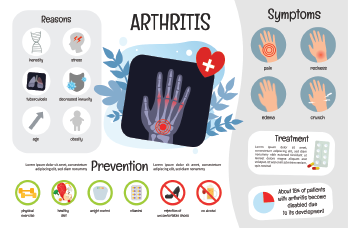
Igdeeva Alena / shutterstock.com
ATLANTA—Rheumatic diseases have been the subject of a range of public health campaigns and reports over the past decade, but improving their visibility remains a work in progress, a Centers for Disease Control and Prevention (CDC) expert said at the 2019 ACR/ARP Annual Meeting. A growing attention to pain and the opioid crisis may help in this regard, he said.
Charles (Chad) Helmick, MD, a medical epidemiologist and the scientific lead for the CDC’s arthritis program, said the organization, in collaboration with many other groups and universities, is continuing in its push.
“The overriding issue in my mind is the need for greater visibility for arthritis and other rheumatic conditions as important health problems,” he said.
When Dr. Helmick created the CDC’s arthritis program in 1999, he was cautioned about the challenge that lay ahead of him, mainly because rheumatic conditions are not among the major, deadly diseases, such as cancer and cardiovascular disease, that occupy so much space in the public consciousness.
“‘This is not a fatal disease—you’re sort of leading the way for a lot of other chronic, non-fatal disabling diseases,’” he recalled being told. “And it’s tough. We’ve worked on it, and I think we’ve done a lot of successful things over that time.”
Burden of Rheumatic Conditions
The burden of rheumatic conditions continues to be great in the U.S. According to CDC reports covering 2013–15, 54 million adults, or 22.7% of the adult population, had arthritis, and 22.7 million adults, or 43.5%, had limitations to activity they attributed to arthritis.1 By 2040, the CDC’s National Health Interview Survey predicts 78 million adults will have arthritis, and that is almost certainly an underestimate because it counts only the change based on the population structure by age, Dr. Helmick said.
“It does not take into account the obesity epidemic, which I think will make this number even higher,” he cautioned.
In 2013, the cost attributed to arthritis was $304 billion–140 billion in medical costs and $164 billion in lost earnings. That’s equal to $2,117 in medical costs per adult with arthritis, and $4,040 less in pay for an adult with arthritis vs. an adult without arthritis.2
In an assessment of adults with arthritis across the states, a median of 30.3% had severe joint pain, with Colorado having the lowest percentage at 20.8% and Mississippi the highest at 45.2%.3
A Major Cause of Disability
Research has found the main causes of disability among adults in the U.S. are arthritis or rheumatism, just ahead of back or spine problems.4 “They were way ahead of some of the other big things, like heart disease and diabetes and mental health problems,” Dr. Helmick said.



